Safety Bulletin
Users and operators of Admalite hoists, cranes, and related equipment are required to possess comprehensive knowledge of the safe and proper usage of such equipment. Additionally, they must be cognizant of their responsibilities as delineated in all relevant standards and regulations.
The ASME/ANSI B30 Standard encompasses provisions governing the construction, installation, operation, inspection, testing, maintenance, and utilization of cranes and other lifting and associated equipment.
In accordance with OSHA, ASME, and ANSI standards, the installation, setup, and operation of these units and equipment must be performed by a qualified individual.
OSHA mandates load tests with a rated load for new and modified cranes. As per OSHA’s standard detailed in 29 CFR 1910.179(k), the following functions must be tested for compliance before initial use:
- Hoisting and lowering.
- Trolley travel.
- Bridge travel.
- Limit switches, locking, and safety devices.
The trip setting of hoist limit switches should be determined through testing with an empty hook, gradually increasing speed until reaching maximum velocity. The actuating mechanism of the limit switch must be positioned to trip the switch under all conditions, ensuring ample time to prevent any part of the trolley from making contact with the hook or hook block.
Rated load tests should not exceed 125 percent of the rated load, unless otherwise advised by the manufacturer. Once a rated load test is conducted, paragraph 1910.179(k)(2) necessitates that test reports be kept on record, readily accessible to pertinent personnel.
To guarantee safety and meet installation prerequisites, Admalite mandates load tests prior to the utilization of all hoists, winches, cranes, and associated components. Failure to comply with this requirement can be hazardous, potentially resulting in equipment malfunction and automatic warranty nullification.
The B30 Standards serve the following purposes:
- To prevent or minimize worker injury and ensure the protection of life, limb, and property by stipulating safety requisites.
- To provide guidance to manufacturers, owners, employers, users, and other concerned parties regarding application.
- To offer direction to governments and regulatory bodies in the formulation and enforcement of appropriate safety directives.
The equipment encompassed by B30 Standards is susceptible to hazards that can only be mitigated through the exercise of best practices, vigilance, and common sense.
It is imperative that competent, cautious, physically and mentally capable, and thoroughly trained personnel operate any equipment and handle loads with due consideration to safety.
Serious hazards encompass:
- Inadequate or improper maintenance.
- Overloading.
- Dropping or slippage of loads.
- Impeding the free passage of the load.
- Utilizing equipment for purposes unintended or beyond its design.
ASME B30 Standards:
- B30.1 Jacks, Industrial Rollers, Air Casters, and Hydraulic Gantries.
- B30.2 Overhead and Gantry Cranes (Top Running Bridge, Single or Multiple Girder, Top Running Trolley Hoist).
- B30.3 Tower Cranes.
- B30.4 Portal and Pedestal Cranes.
- B30.5 Mobile and Locomotive Cranes.
- B30.6 Derricks.
- B30.7 Winches.
- B30.8 Floating Cranes and Floating Derricks.
- B30.9 Slings.
- B30.10 Hooks.
- B30.11 Monorails and Underhung Cranes.
- B30.12 Handling Loads Suspended from Rotorcraft.
- B30.13 Storage/Retrieval (S/R) Machines and Associated Equipment.
- B30.14 Side Boom Tractors.
- B30.15 Mobile Hydraulic Cranes.
- B30.16 Overhead Hoists (Underhung).
- B30.17 Overhead and Gantry Cranes (Top Running Bridge, Single Girder, Underhung Hoist).
- B30.18 Stacker Cranes (Top or Under Running Bridge, Multiple Girder with Top or Under Running Trolley Hoist).
- B30.19 Cableways.
- B30.20 Below-the-Hook Lifting Devices.
- B30.21 Lever Hoists.
- B30.22 Articulating Boom Cranes.
- B30.23 Personnel Lifting Systems.
- B30.24 Container Cranes.
- B30.25 Scrap and Material Handlers.
- B30.26 Rigging Hardware.
- B30.27 Material Placement Systems.
- B30.28 Balance Lifting Units.
- B30.29 Self-Erecting Tower Cranes.
- B30.30 Ropes.
DO NOT Please read the items below to protect you and others around you.
- Operate, install, or repair the hoist unless you are trained and authorized.
- Operate the hoist unless you have first read the operator’s manual.
- Operate the hoist without appropriate PPE and without performing a pre-shift inspection.
- Operate the hoist if it does not comply with all required OSHA regulations.
- Lift more than the rated load.
- Lift people or lift loads over people.
- Wrap the hoisting rope or chain around the load.
- Operate with the chain/rope not seated correctly in the sprockets, drum, or sheave.
- Operate hoist unless the direction of the hook travel agrees with the direction shown on the control.
- Operate the hoist unless the hook travel limit devices function correctly. (Test without a load PRE-SHIFT)
- Operate the hoist with twisted, kinked, damaged, dirty, or unlubricated chains or rope.
- Operate a damaged or malfunctioning hoist.
- Operate the hoist when the hook is not centered under the hoist
- Remove or hide any WARNING & SAFETY LABELS
Daily Checklist
- Tagged hoist: Ensure the crane or hoist is not tagged out of order.
- Control Devices: Conduct a test run. Ensure all motions agree with control device markings.
- Brakes: Check all motions for excessive drift and abnormal stopping distances.
- Hook: Check for damage, cracks, nicks, gouges, deformations on throat opening, wear on saddle or load-bearing point, and twisting.
- Hook latch: Check for proper operations.
- Wire rope: Check for broken wires, strands, kinks, and deformation or damage to the rope structure.
- Chain: Check chains for corrosion, wear, elongation, twist, nicks, or gouges. Keep chain/wire rope clean and lubricated.
- Reeving: Check the rope for proper reeving and that rope parts are not twisted.
- Limit switches: Ensure that all limit devices can stop lifting motion before the load block or chain/rope stop strikes the hoist.
- Oil leakage: Check for any oil leakage on the crane/hoist and the surrounding floor.
- Unusual sounds: Check for unusual sounds from the hoist while operating.
- Warning & safety labels: Ensure that labels are not missing and are legible.
